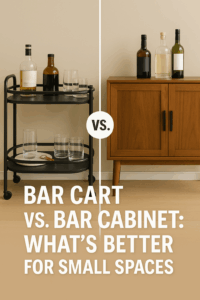If you’re shopping for outdoor furniture and love the look of woven styles, chances are you’ve encountered both wicker and rattan. Though often used interchangeably, these terms refer to very different things—and understanding the difference is essential to choosing the right material for your climate, maintenance level, and style goals.
So, what’s better: wicker or rattan? The answer depends on your priorities. Let’s break it down.
First, What’s the Difference?
🧺 Wicker = Weaving Technique
“Wicker” is not a material—it refers to the weaving process used to create furniture. Wicker can be made from:
- Natural rattan
- Bamboo
- Willow
- Resin (synthetic wicker)
- Plastic or vinyl
🌿 Rattan = Natural Material
“Rattan” is a natural vine-like plant in the palm family. It’s often used to create wicker furniture, but not all wicker is made from rattan.
Pros & Cons of Natural Rattan Furniture
✅ Pros:
- Organic texture and visual warmth
- Lightweight and easy to move
- Ideal for boho, coastal, or tropical styles
- Can be woven into intricate designs
⚠️ Cons:
- Not waterproof or UV-resistant
- Prone to mold, mildew, or cracking if left outdoors
- Requires indoor storage or covering when not in use
- Fades and softens in direct sunlight
Best For:
- Covered patios, sunrooms, or indoor-outdoor hybrids
- Low-moisture climates or decorative use
Pros & Cons of Synthetic Wicker (All-Weather Wicker)
✅ Pros:
- Made from resin or HDPE plastic, woven to mimic rattan
- UV-resistant, moisture-proof, fade-resistant
- Low maintenance: just hose off to clean
- Available in many colors and weave styles
⚠️ Cons:
- Can feel less “natural” or warm than real rattan
- Cheap resin versions may crack or unravel over time
Best For:
- All-weather outdoor use: decks, patios, poolside
- Buyers wanting long-term durability with less upkeep
Side-by-Side Comparison
| Feature | Natural Rattan | Synthetic Wicker (Resin/HDPE) |
|---|---|---|
| Material | Natural vine | Plastic/resin |
| Durability Outdoors | Low | High |
| Water Resistance | Poor | Excellent |
| UV Resistance | Poor | Excellent |
| Maintenance | High | Low |
| Feel / Look | Organic, warm | Depends on quality |
| Best For | Covered patios, sunrooms | Full outdoor exposure |
FAQs
Q: Is rattan the same as wicker?
A: No—rattan is a material, while wicker is a weaving technique. You can have wicker made from rattan, resin, or other materials.
Q: Which lasts longer outside: wicker or rattan?
A: Synthetic wicker lasts longer. Natural rattan degrades quickly when exposed to rain or sun.
Q: Can I leave natural rattan furniture outside?
A: Only if it’s on a covered porch and brought inside during bad weather.
Q: What’s the most low-maintenance option?
A: HDPE wicker—just wipe it down or rinse with a hose.
Conclusion
So, what’s better—wicker or rattan? If you want durability, weather resistance, and minimal upkeep, go with synthetic wicker made from HDPE or resin. It’s the best choice for most outdoor setups.
If you love the charm of natural materials and have a covered or indoor space, natural rattan adds warmth and elegance—but it needs protection from the elements.
Choose based on how and where you plan to use your furniture—and how much effort you’re willing to put into maintenance.




